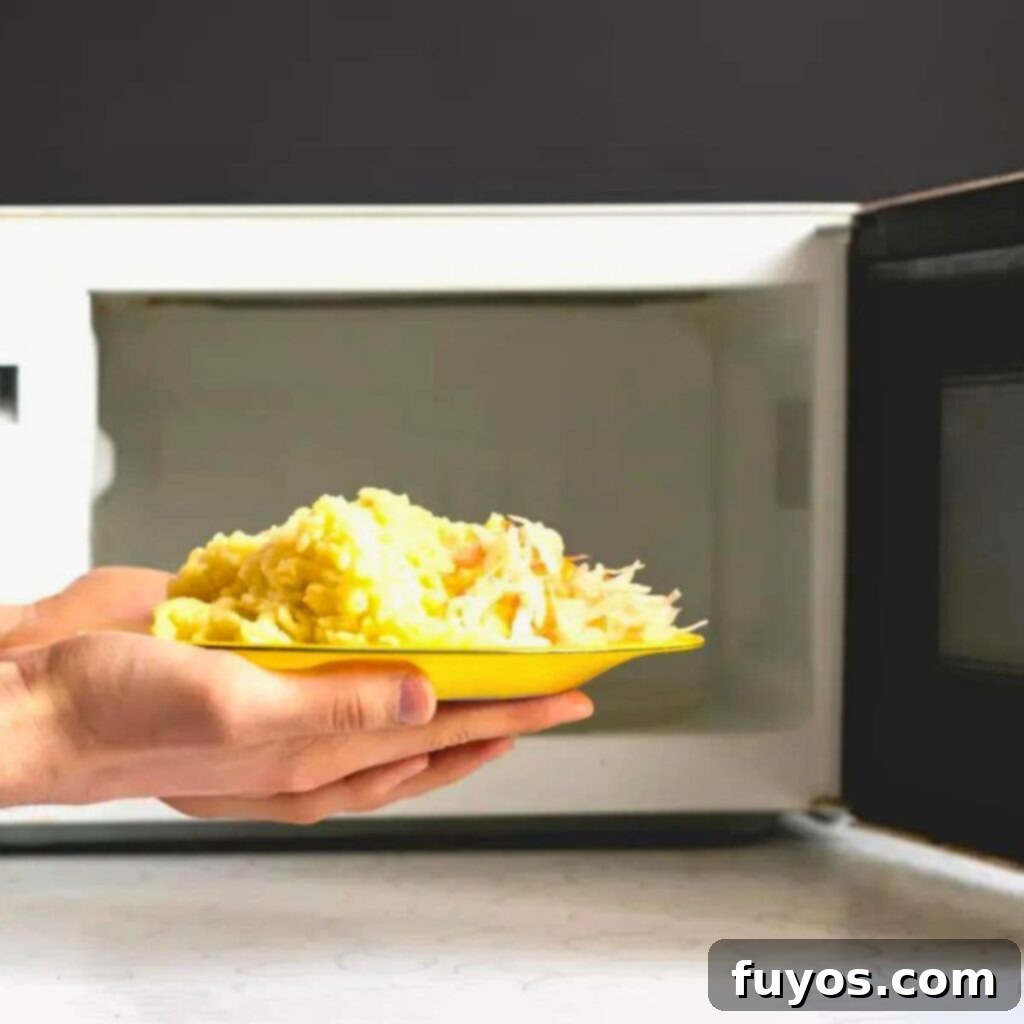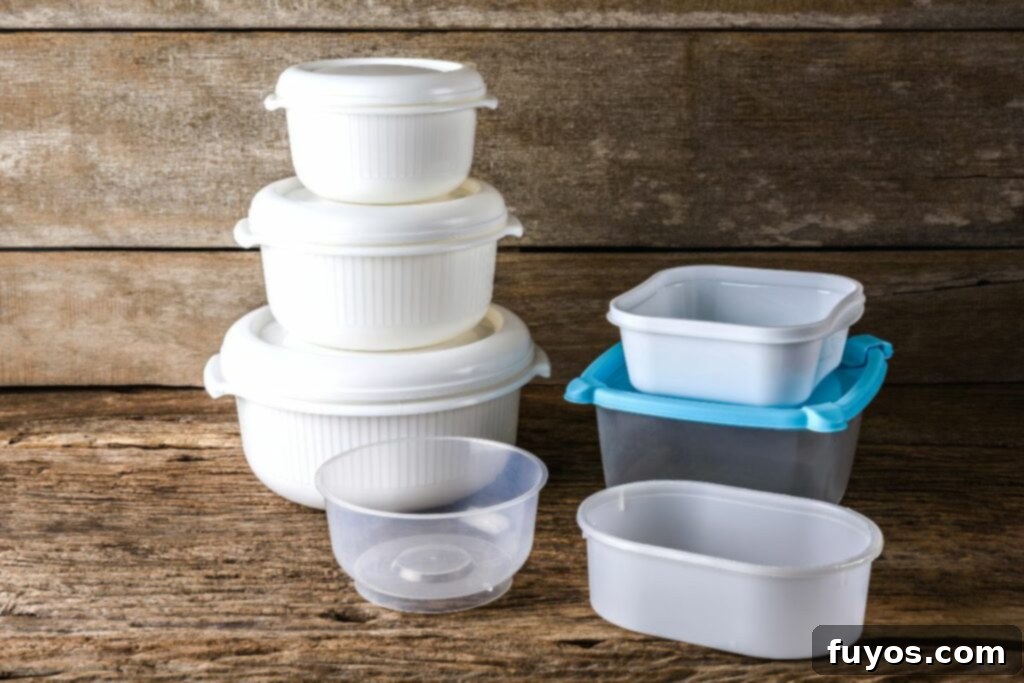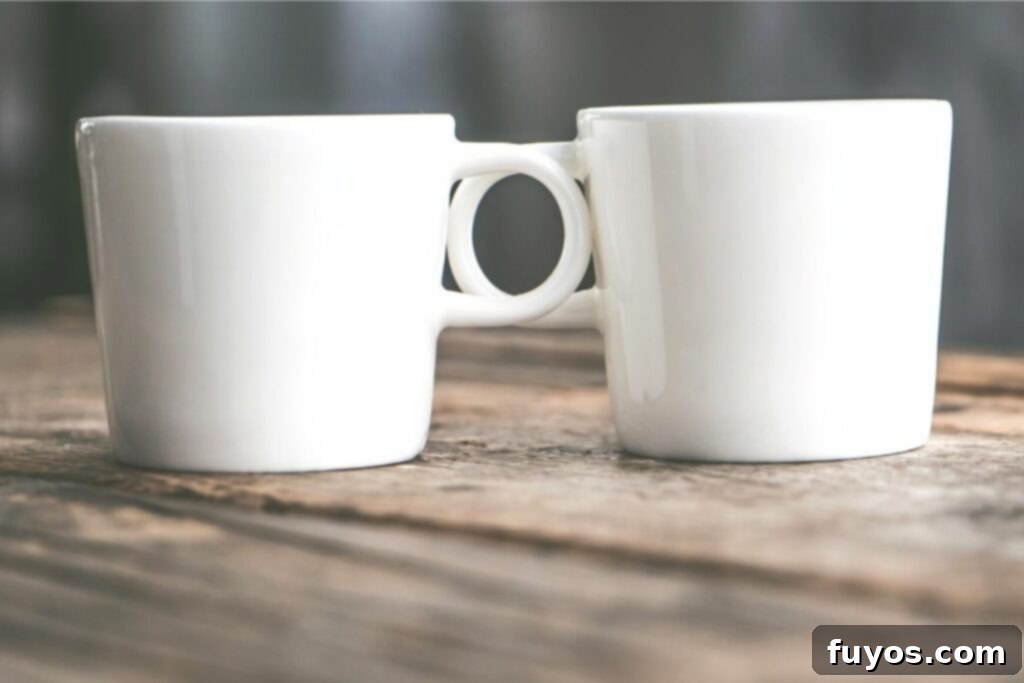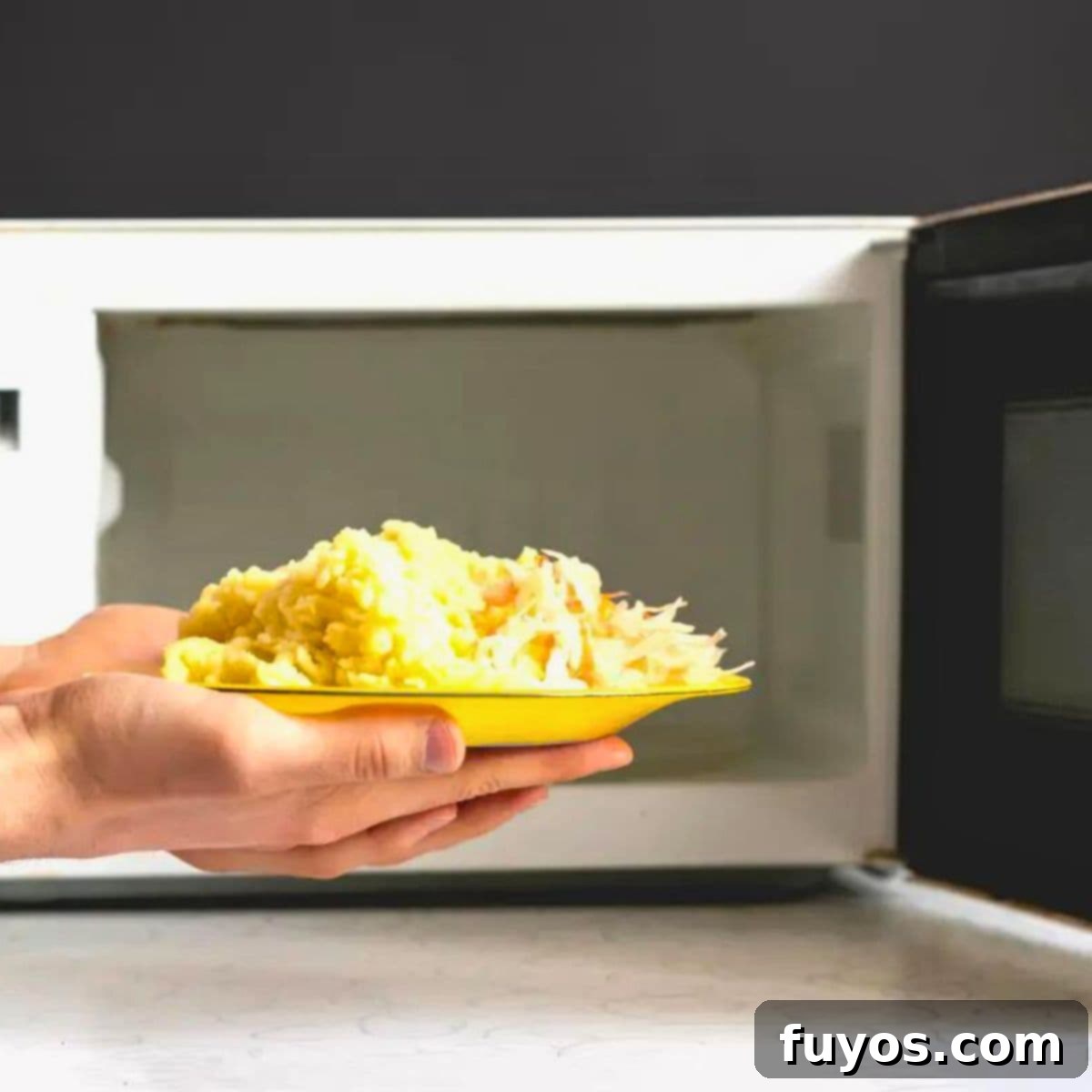Decoding Microwave Safe Symbols: A Comprehensive Guide to Heating Food Safely
The microwave has revolutionized our kitchens, offering unparalleled speed and convenience for cooking and reheating meals. It’s a true time-saver, transforming leftovers into delicious dishes in minutes or quickly defrosting ingredients for your next culinary adventure. However, this convenience comes with a crucial caveat: not everything is safe to pop into the microwave. Improper use of containers can lead to anything from a minor mess to dangerous chemical leaching or even a fire hazard. To ensure safe and efficient microwave use, understanding the various symbols indicating microwave compatibility is absolutely essential. This guide will walk you through everything you need to know about identifying microwave-safe items, helping you confidently heat your food without worry.

Universally, the most common microwave safe symbol is characterized by a series of 3-4 horizontal wavy lines. This distinct emblem typically appears in a raised or embossed format on the bottom of your glass or plastic dishes. Yet, these wavy lines are just one of several variations you might encounter. Different manufacturers and material types might display unique symbols, and understanding these nuances, alongside general material properties, is vital for ensuring optimal kitchen safety. Let’s delve deeper into the specifics of these symbols and the various materials they represent.
What Does the Microwave Safe Symbol Look Like?
The primary microwave safe symbol commonly features 3-4 horizontal wavy lines, which can sometimes extend up to as many as six. While these wavy lines often appear alone, they are frequently accompanied by additional graphical elements to provide clearer context. These supplementary designs can vary widely, but often include:
- A rectangular box enclosing the wavy lines.
- A plate-shaped design positioned underneath the wavy lines, suggesting suitability for serving.
- A stylized microwave oven icon, complete with control panels on the side, indicating its intended use.
- A bowl-shaped object situated below the waves, implying suitability for heating liquid or semi-liquid foods.
- The explicit inclusion of the word “micro” or “microwave” printed alongside or beneath the symbol for unmistakable clarity.
Beyond these common variations, you might also encounter more distinctive microwave safe symbol designs. These less-common alternatives ensure comprehensive coverage across a range of products. Examples include:
- A graphic depicting a countertop microwave oven with vertical wavy lines emanating over a plate.
- A sequence of 4-6 circles that progressively increase in size, contained within a square box, often featuring a simple 3-dot control panel at the top.
- Simply the phrase “microwave safe” printed directly on the item, without any accompanying graphic.
It is equally important to recognize symbols that indicate an item is not microwave safe. If you observe any of the above-mentioned symbols—or indeed any other symbol—with an ‘X’ or a diagonal strikethrough slash (“/”) imposed over it, this serves as a clear warning that the dish or container is explicitly not designed for microwave use. Always heed these warnings to prevent potential damage to your microwave, the container itself, or more importantly, to avoid health risks associated with chemical leaching or fires.
Why is Microwave Safety So Important?
Understanding and adhering to microwave safe guidelines goes beyond mere convenience; it’s a critical aspect of kitchen and food safety. Using non-microwave-safe items can lead to a variety of undesirable and potentially dangerous outcomes. For instance, certain plastics can melt, warp, or crack when exposed to the intense heat generated by microwave radiation, making them unusable and potentially creating a messy situation inside your appliance. More concerning, however, is the risk of chemical leaching. Many plastics, especially older ones or those not designed for high heat, can release harmful chemicals like BPA (Bisphenol A) or phthalates into your food when heated. These chemicals have been linked to various health issues, making it paramount to use only verified microwave-safe containers.
Beyond chemical contamination, non-approved materials can pose significant fire hazards. Metal, for example, can cause sparks, electrical arcs, and even fires inside the microwave, severely damaging the appliance and potentially your home. Some glazes on ceramics or decorative elements on dishes might contain metallic components that can react dangerously. Even paper products, if not explicitly designated as microwave safe, could contain coatings or impurities that can ignite under specific conditions. By taking a moment to check for the microwave safe symbol, you are actively protecting your health, preserving your kitchen appliances, and ensuring a safe cooking environment for everyone in your home.
What is the Microwave Safe Symbol on Tupperware?
Tupperware typically uses a clear and consistent microwave safe symbol: three horizontal wavy lines encased within a rectangular box. This symbol is usually found molded or printed onto the bottom of their containers, making it easy to spot. Similar to other manufacturers, Tupperware also employs a visual indicator for items not suitable for microwave heating. If you see the same icon but with a diagonal strikethrough slash (‘/’) over it, this explicitly signifies that the specific container is not microwave safe.
Are All Tupperware Containers Microwave Safe?
No, it is a common misconception that all Tupperware containers are microwave safe. In reality, many Tupperware products are specifically designed for food storage and organization, rather than for the reheating process. Tupperware offers a wide range of products with diverse functionalities, and not all are built to withstand the unique heating properties of a microwave oven. Therefore, it is absolutely crucial to inspect each individual piece of Tupperware for the presence of the microwave safe symbol.
If the microwave safe symbol is absent from a particular Tupperware container, even if there isn’t a strikethrough symbol explicitly prohibiting microwave use, you should still assume that the item is not microwave safe. When in doubt, it’s always best to err on the side of caution. However, Tupperware does produce specific lines of containers and even cooking gadgets that are unequivocally designed for microwave use. For instance, did you know about the convenience of a microwave pressure cooker? It’s a fantastic example of a specialized Tupperware product that’s both innovative and microwave safe, making meal prep quick and efficient.

Is Pyrex Microwave Safe?
Generally, most Pyrex containers are indeed microwave safe, and this often extends to their plastic lids as well. Pyrex is renowned for its durable glass bakeware, which is designed to withstand a wide range of temperatures, making it an excellent choice for microwave use. The glass itself is highly resistant to thermal shock, allowing it to transition from refrigerator to microwave without issue. However, as with any kitchen item, it’s always prudent to perform a quick check.
To be absolutely certain, take a moment to double-check your specific Pyrex container for the microwave safe symbol. While it’s largely expected for Pyrex to be safe, a quick verification confirms you’re using it correctly. I personally find Pyrex lids incredibly convenient for keeping food covered in the microwave. Using a lid, whether glass or plastic, helps to retain moisture, ensures even heating, and most importantly, prevents messy splatters inside your appliance. Learn more about why covering food in the microwave is a smart practice for cleanliness and efficiency!
How Do You Know if a Mug is Microwave Safe?
Identifying a microwave-safe mug is generally straightforward, but there are crucial exceptions to be aware of. A mug is typically safe for microwave use unless it contains certain materials or features. Key indicators that a mug might not be microwave safe include:
- Any presence of metal: This could be obvious metal housing, a decorative metallic rim (e.g., gold or silver accents), or even metallic paint in the design. Metal in a microwave can cause sparks, arcing, and potentially damage the appliance or start a fire.
- Non-microwave safe insulation: Some travel mugs or insulated cups are designed with materials that are not meant for microwave heating, as the insulation can break down or release harmful substances.
- Materials made from unsafe plastics: While many plastic mugs are microwave safe, others are made from plastics that can warp, melt, or leach chemicals when heated.
While metal components are usually easy to spot, other non-microwave safe elements might be more subtle. Always check the bottom of the mug for a clear microwave safe symbol. If the mug came with instructions or a safety guide, be sure to consult it. If no symbol is present and you’re uncertain about its material or construction, there’s a simple and effective test you can perform to confirm its microwave safety:
- Place the empty mug you wish to test in your microwave.
- Next to it, place a separate cup or bowl filled with water in a dish that you know is microwave safe. The water absorbs the microwaves, preventing potential damage to the empty mug if it’s unsafe.
- Set your microwave to high power and cook for 30 seconds.
- Carefully remove both the mug and the water cup. Feel the tested mug with your hands.
- If the mug feels hot to the touch (beyond what would be expected from residual heat from the environment), it indicates that the mug itself is absorbing the microwave energy, making it unsafe for use. If the mug remains cool while the water is hot, it means the mug did not absorb the microwaves and is therefore microwave safe.
Are All Ceramic Mugs Microwave Safe?
Generally, most ceramic mugs are safe to use in the microwave. However, an important exception arises if they have been glazed with a material that is not microwave safe. This typically refers to glazes that contain metallic elements or metallic finishes. These metallic components can react negatively with microwave energy, leading to sparking, arcing, and potential damage to both the mug and the microwave oven.
It’s also crucial to note that any mugs that have undergone repairs, particularly those glued back together, should not be used in the microwave. The vast majority of adhesives and glues are not designed to withstand microwave heating. The heat can cause the glue to weaken, melt, or release harmful chemicals, leading to your mug falling apart (again) and potentially contaminating your food. Always opt for intact, un-repaired ceramic mugs that are free from metallic glazes for safe microwave heating.

Are Paper Plates Microwave Safe?
The majority of standard paper plates are considered microwave safe for short heating periods. They are typically made from cellulose fibers, which do not react with microwave energy in a harmful way. However, there are specific varieties of paper plates that are unequivocally not microwave safe. These include:
- Paper plates with foil or metallic designs: Any paper plate adorned with metallic elements, whether it’s a decorative rim, a shiny pattern, or a full foil lining, should never be placed in a microwave. Metal causes dangerous sparking and can lead to fires or damage to the appliance.
- Paper plates coated in a thin layer of plastic for waterproofing: While these coatings make plates sturdier and more resistant to liquids, some plastics used may not be microwave safe and can melt, warp, or leach chemicals when heated.
Since the microwave safe symbol is generally not printed on individual paper plates, it is imperative to look for this information on the exterior packaging of the entire pack of plates. If the packaging lacks a clear microwave safe symbol or any explicit indication of microwave compatibility, it is safest to assume that the paper plates are not microwave safe and to use an alternative container for heating. Interestingly, paper plates are often the go-to choice for heating quick snacks like pizza rolls in the microwave due to their disposable convenience, underscoring the importance of choosing the right type.
Is Polypropylene (PP5) Microwave Safe?
Yes, polypropylene, often identified by the recycling symbol ‘PP5’, is widely recognized as a microwave-safe plastic. This type of plastic is highly valued for its excellent heat resistance and durability, making it an ideal material for food containers that are intended for microwave use. Polypropylene does not absorb significant microwave energy, which means it heats food effectively without excessively heating the container itself. This property, combined with its resistance to melting and chemical breakdown at typical microwave temperatures, ensures both the safety of your food and the longevity of the container.
When selecting plastic containers for microwave heating, always look for the recycling symbol with a ‘5’ in the middle, which often comes with the letters “PP” printed underneath. This clear designation confirms that you have a polypropylene container. While many plastics are now BPA-free, choosing PP5 specifically provides an added layer of assurance for microwave safety. Other plastics, such as those marked with ‘1’ (PET), ‘2’ (HDPE), ‘3’ (PVC), ‘4’ (LDPE), or ‘6’ (PS – polystyrene), are generally not recommended for microwave use, as they may leach chemicals or deform when heated. Always prioritize containers explicitly labeled with the microwave safe symbol and/or the PP5 recycling code for optimal safety.
Can You Microwave Styrofoam?
While it is technically possible to microwave Styrofoam without it immediately melting in all cases, you absolutely should not. Despite its widespread use for takeout and its ability to withstand temperatures up to around 200 degrees Fahrenheit without visible deformation, microwaving Styrofoam poses significant health risks. Styrofoam is primarily made from polystyrene (PS, recycling code 6), a polymer known for its lightweight, sturdy, and inexpensive qualities. However, when polystyrene is heated, particularly in a microwave, it can release toxic fumes and non-food safe chemicals into your food.
These chemicals, including styrene, can migrate from the Styrofoam container into your meal, posing potential health hazards. Even if the Styrofoam container appears intact and doesn’t visibly melt, the chemical leaching can still occur. Therefore, it is strongly recommended that you avoid microwaving any food in Styrofoam containers. Instead, always transfer your food to a certified microwave-safe vessel, such as glass, ceramic, or polypropylene (PP5) plastic, before heating. This simple step ensures that your meal remains safe and free from undesirable chemical contamination.
General Tips for Microwave Use and Safety
Beyond understanding specific symbols and materials, adopting a few general safety practices can significantly enhance your microwave experience and protect your well-being:
- Always Check the Symbol: When in doubt, always look for the microwave safe symbol. If it’s not present, assume the item is not safe.
- When in Doubt, Don’t: If you cannot find a symbol, or if you have any reservations about a container’s material, opt for a known microwave-safe alternative. Better safe than sorry.
- Consider Material Age and Condition: Old or cracked plastic containers, even if originally microwave-safe, may degrade over time and could be more prone to leaching chemicals or breaking down. Replace them when they show signs of wear.
- Avoid Plastic Wrap Directly Touching Food: While some plastic wraps are microwave-safe, it’s generally best to avoid direct contact with food, especially fatty foods, as the heat can cause the plastic to melt or leach chemicals. Use a microwave-safe lid or a damp paper towel instead.
- Use Covers to Prevent Splatters and Retain Moisture: Covering food with a microwave-safe lid, plate, or even a paper towel helps to keep your microwave clean and ensures that food heats more evenly by trapping steam.
- Read Manufacturer Guidelines: Always refer to the instructions provided by the microwave manufacturer and the container manufacturer for specific usage recommendations and limitations.
- Don’t Overheat: Overheating food or empty containers can lead to damage, chemical leaching, or even fires. Always follow recommended cooking times and power levels.
Quick + Easy Recipes
straight to your inbox
Conclusion
Navigating the world of microwave cooking safely is made significantly easier once you understand the various microwave safe symbols and the properties of common kitchen materials. By familiarizing yourself with these visual cues, you can confidently identify proper dishes and containers for all your cooking and reheating needs, ensuring both convenience and safety in your kitchen. Whether it’s the wavy lines on a glass dish, the ‘PP5’ symbol on a plastic container, or the absence of metallic decor on your favorite mug, these indicators are your best defense against potential hazards.
Remember to always approach microwave use with caution. Overheating, using inappropriate containers, or neglecting manufacturer guidelines can lead to unwanted consequences, including damage to your containers (even microwave-safe ones), your appliance, or, most critically, health risks from chemical leaching or even fire. By making informed choices and adhering to these safety practices, you’ll ensure that you’re safely harnessing the full potential of your microwave, making meal preparation efficient, enjoyable, and above all, safe.
